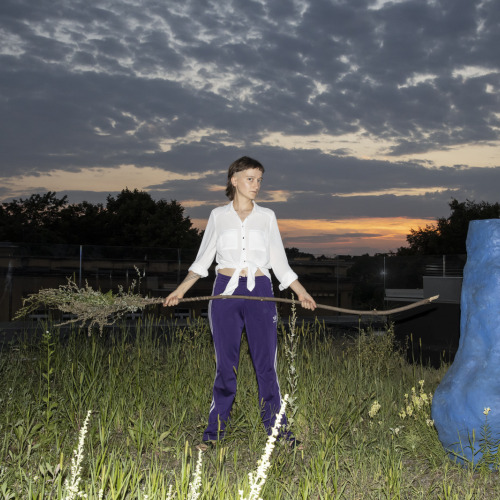
Exhibtion of video works
These video works by Sarajevo artists provide insight into the
artistic production of the post-war generation of female artists, who
day after day find themselves confronting the issues of post-war
syndrome, hyper-colonization, and precarious work conditions and life
situations, which often seem to make less sense than the war itself.
Leila Čmajčanin:
Reverse (Obrnuto), 4’29”, 2007
This video re-examines (female) identity in a humorous manner by
taking everyday ritual as a material to play with. What emerges as a
consequence is the question of what happens when a ritual which
ascribes crucial meaning to life is changed.
Under - Over the Burqa (Ispod - preko burke), 5’, 2008
This video was created in cooperation with the artist-performer Alma
Suljevič on the basis of the testimony of Eva Ensler, who visited
Afghanistan in 2000. The author states in her preface that the video
does not speak merely of a farce, but also about the specific time and
place, which leaves women with no choice whatsoever.
Lana čmajčanin:
Female President (Predsjednica), 3’17”, 2004
This video performance features the author standing behind a podium
and telling a story in the manner of a political speech or allocution
to a crowd. She speaks about a girl who was subjected to brutal torture
during the war period. The text is a summary of the book I Begged Them to Kill Me – Violence Towards Women in BiH (Molila sam ih da me ubiju – Zločin nad ženom BiH), which was published in Bosnia and Herzegovina, 1999.
Adela jušić:
Sniper (Snajperist), 4’21”, 2007
The video work Sniper is the author’s
attempt to confront the moment when she lost her father in the war. Her
father was a sniper who got killed on a war mission by a sniper from
the opposite side. A couple of days before this happened, 10 year-old
Adela coincidentally found her father’s notebook, which contained the
list of his “hits”…
Who Needs DRNČ? (Kome treba DRNČ?) 5’40”, 2008
In contrast to the above video, which deals with the subject of
confronting negative emotions, this video brings up memories of happier
moments. Moments experienced when the author spent time together with
her father-soldier. Upon coming back tired from the battlefield, he
“communicated” with his daughter by letting her clean his weapons.
Dinner for Three (Večera za troje), 16’27”, 2009
The main protagonist of this video is Hajji Gani, known as Hadžigani all over the charshia,the
old city centre. Apart from recognizing his outstanding personality,
the author of the video also sees him as a person who brings together
Western European and Muslim traditions, while overcoming poverty with
his modest nature, on the one hand, and by praising the simplicity and
beauty of life by means of a ritual, on the other.


